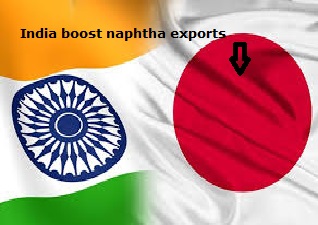
India boost naphtha exports to Japan and other Asian markets
YarnsandFibers News Bureau 2017-04-17 13:00:00 – TokyoIndia exported around 895,000 tons of naphtha to East Asia in March, 60-80% more than in February. March naphtha exports from Europe also appear to have grown around 10% from the prior month reported Japanese general trading companies.
Boost in naphtha exports to Japan and other Asian markets by India is fueling concerns of an oversupply in the region. One cause of the increase in Asian exports is sluggish gasoline demand in India, explains Kenta Kato, head of Mitsui & Co.'s petroleum business office.
Naphtha is used for some gasoline, so slowing Indian gasoline demand generates naphtha surpluses.
India's gasoline demand hit record highs in 2016. However, economic activity has slowed since the government banned large currency notes. As a result, demand for gasoline, consumption of which tends to closely follow economic trends, has fallen, so refiners have been turning out and exporting more naphtha.
A major trading house also points out that petroleum companies stepped up naphtha exports to Asia to lighten inventories prior to the end of the fiscal year in March.
In Europe, a drop in the price of liquefied petroleum gas, a competing petrochemical feedstock, has led to a rise in naphtha exports. Lower LPG prices have made naphtha relatively less attractive, prompting petrochemical companies to revert to LPG usage and ship more naphtha abroad.
Growth in exports from both India and Europe has left Asia awash in naphtha. One indicator of the supply-demand balance is the spread against North Sea Brent crude oil, with a large price difference suggesting a shortage of naphtha and a small difference indicating a glut.
The price difference between naphtha and Brent crude averaged around $75 a ton in March. Naphtha was 19% more expensive than crude, a smaller premium than the 23% difference seen in January and February.
Japan's petrochemical companies have cited high crude oil and naphtha prices as a reason to push for price hikes on synthetic resins. If an oversupply causes naphtha prices to fall, naphtha import prices will also be pushed lower, potentially making for rough going in petrochemical producers' price hike negotiations.
Looking ahead, refineries in Japan and other parts of Asia are due to complete regular maintenance shutdowns and return to full operation in April and May, raising the possibility of an even larger glut heading into June.
Market Intelligence
Ask for free sample Report

experience
Customer Base
dedicated team
Countries Served Worldwide









